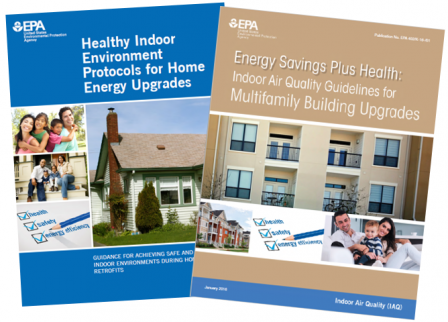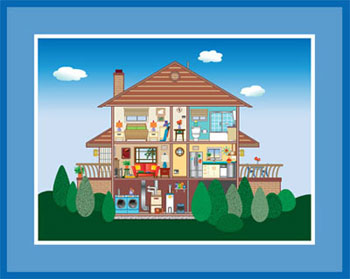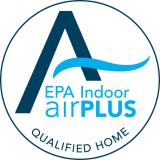Protect Indoor Air Quality in Your Home
On this page:
Whether you live in an apartment, townhome or single family home, an old home or are building a new home, there are many ways to protect and improve your indoor air quality.
Indoor pollution sources that release gases or particles into the air are a primary cause of indoor air quality problems in homes. Inadequate ventilation can increase indoor pollutant levels by not bringing in enough fresh outdoor air to dilute emissions from indoor sources and by not carrying indoor air pollutants out of the home. High temperature and humidity levels can also increase concentrations of some pollutants.
The resources on this page will help you take immediate steps to protect IAQ in your home and prevent IAQ problems during remodels, renovations or when building a new home. You can also find resources to help building professionals and residents protect IAQ in multiifamily buildings.
What You Can Do Now
- Test for radon or determine how to fix high levels of radon.
- Reduce asthma triggers.
- Prevent mold by controlling moisture.
- Keep your home and car smoke-free.
- Install carbon monoxide (CO) alarms. Change the batteries in existing CO and smoke detectors.
- Use and properly maintain your ventilation system.
Home Remodels and Energy Upgrades
 The benefits of home upgrades are tremendous — improving quality of life for occupants, protecting the environment, and sustaining American jobs. Integrating healthy home and energy efficiency upgrade activities can simultaneously lower utility costs and improve indoor air quality. Leading energy efficiency upgrade programs have demonstrated the feasibility of integrating many indoor air quality and safety improvements. However, home energy upgrade and other remodeling and repair activities might negatively affect indoor air quality if an appropriate home assessment is not made before work begins or if work is performed improperly.
The benefits of home upgrades are tremendous — improving quality of life for occupants, protecting the environment, and sustaining American jobs. Integrating healthy home and energy efficiency upgrade activities can simultaneously lower utility costs and improve indoor air quality. Leading energy efficiency upgrade programs have demonstrated the feasibility of integrating many indoor air quality and safety improvements. However, home energy upgrade and other remodeling and repair activities might negatively affect indoor air quality if an appropriate home assessment is not made before work begins or if work is performed improperly.
Use EPA’s Protocols to protect IAQ during energy upgrades and other remodels.
Additional EPA Resources on IAQ in Remodeling
- Specific Home Remodel Environmental Concerns
- What to Do When Remodeling Your Space
- Building a Home Addition?
- IAQ Best Practices for Remodeling
- Energy, Weatherization, and IAQ
- Publications about IAQ
Consumer Product Safety Commission Remodeling Resources
- Biological Pollutants in Your Home. This document explains indoor biological pollution, health effects of biological pollutants and how to control their growth and buildup. One third to one half of all structures have damp conditions that may encourage development of pollutants such as molds and bacteria, which can cause allergic reactions — including asthma — and spread infectious diseases. Describes corrective measures for achieving moisture control and cleanliness. This brochure was prepared by the American Lung Association and the U.S. Consumer Product Safety Commission.
- Biological Pollutants in your Home [EPA 402-F-90-102, January 1990]
- Healthy Indoor Painting Practices This brochure by EPA and the U.S. Consumer Product Safety Commission discusses safety practices for residents, property managers and painters.
- Healthy Indoor Painting Practices [EPA 744-F-00-011), May 2000]
- What You Should Know About Using Paint Strippers (CPSC-F-747-F-95-002), February 1995. Paint strippers contain chemicals that loosen paint from surfaces. These chemicals can harm you if not used properly.
- Some paint stripping chemicals can irritate the skin and eyes, or cause headaches, drowsiness, nausea, dizziness, or loss of coordination.
- Some may cause cancer, reproductive problems or damage of the liver, kidney or brain.
- Others catch fire easily.
- Proper handling and use of paint strippers will reduce your exposure to these chemicals and lessen your health risk.
- An Update on Formaldehyde: 1997 Revision (CPSC publication #725) The U.S. Consumer Product Safety Commission, with assistance of EPA, developed this brochure to provide information about formaldehyde in indoor air. The brochure tells consumers where they may come in contact with formaldehyde, how it may affect their health and how their exposure to formaldehyde might be reduced.
Build Your New Home with Improved IAQ
- Build an Indoor airPLUS Qualified New Home


